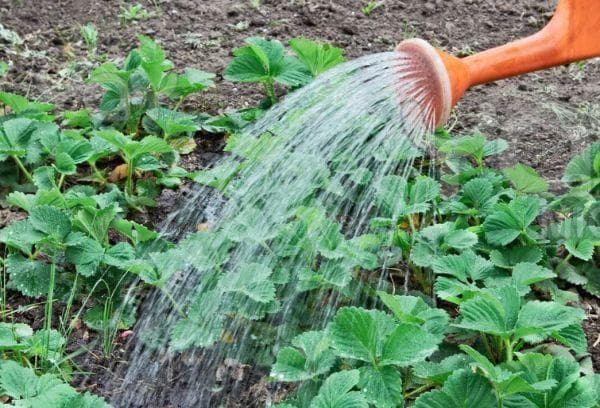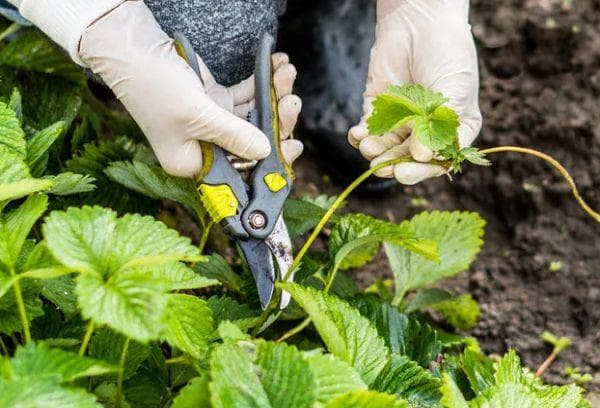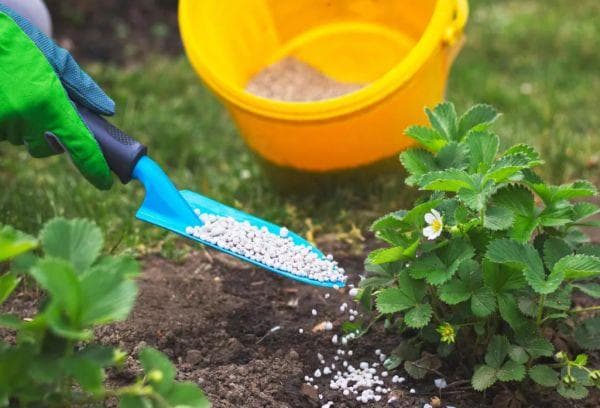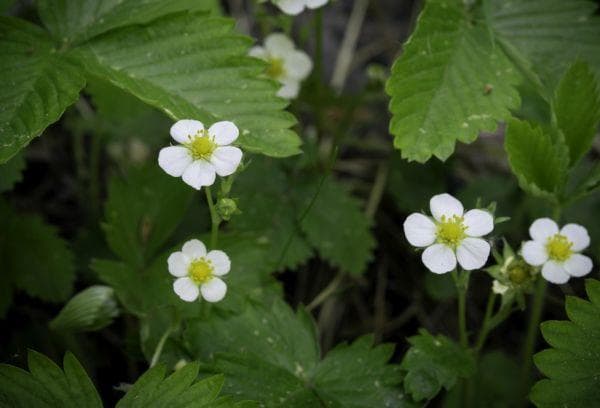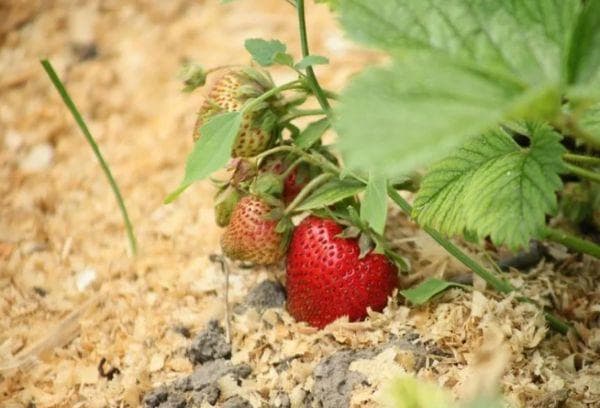Strawberry blossoms - 5 important things for a good harvest
Berries grown on your own plot are tastier and healthier than store-bought ones. I will share with you what you need to do when strawberries bloom to get a good harvest. You need to take care of bushes most of all in the spring, when plants are actively growing and flowering begins. Having received everything you need during this period, strawberries will definitely reward you with large and sweet berries.
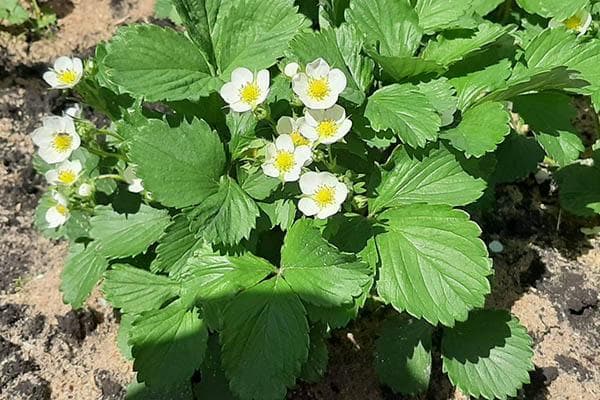
1. Increase watering
Strawberries (garden strawberries) need regular watering. On average, in warm weather, I water the beds once a week. During flowering, I always increase the frequency of watering, since plants require additional moisture to form buds and then ovaries. Strawberries have a superficial root system, so they cannot extract water from the depths.
About every 5 days (depending on the weather) I walk through the strawberry beds with a watering can and pour 0.5 liters of water or a little more under each bush. There is no point in watering during the day, since in the sun the water quickly evaporates and the soil again becomes dry and becomes covered with a hard crust.
I water the berry bushes early in the morning or just after sunset. I take water from a barrel, where it settles and warms up in advance. If you have the opportunity to organize drip watering of plants, that’s great. The most convenient from a maintenance point of view (although costly) are automatic systems.
Water from the dropper is supplied directly to the root zone, no drops of moisture remain on the bushes that can cause sunburn or cause rot, moisture is not spent on weed growth. This watering option is especially convenient for those who visit their dacha on short visits.
2. Remove the whiskers, leaving them only on the uterine bushes
Trimming the whiskers is the first thing I do when the strawberries begin to grow. I continue to do this both during the flowering period and later. I leave vegetative propagation shoots only on 2-3 mother bushes, which were pre-selected in the previous season to receive new rosettes.
Every year I plant a new bed of strawberries to rejuvenate the plantings, because modern varieties already after 3 years of fruiting significantly lose their yield, and the berries themselves become small. The remaining plants must be deprived of their tendrils, preventing them from developing.
Strawberries are not able to reproduce and bear fruit at the same time. She primarily spends the received nutrition on the development of reproductive shoots, in which case there is no energy left for berries. You can remove the mustache gradually or all at once when it grows a little.
After the ovaries appear, I also remove some of the leaves. Excessive leaf mass takes away nutrition and moisture, and even shades the berries, preventing them from ripening normally. The bush easily tolerates the removal of 1/3 of all leaves, and the fruits are larger and sweeter, as they are better illuminated by the sun.
3. Apply fertilizer
The first time we fertilize strawberries is in early spring, as soon as the bushes are cleared of old leaves, adding nitrogen fertilizer. As soon as the buds begin to form, it is time to give a second feeding.
This time you can use a solution of nitrophoska (1 tbsp.with a slide for 10 liters of water) or an infusion of wood ash (1 glass per 10 liters of water). I prepare the ash infusion by first pouring 2 liters of hot water over the ash and letting it brew for 1-2 days, after which I bring the total volume of the solution to 10 liters.
Consumption of nutrient compositions – 1 liter for each square. m beds. During this period, garden strawberries still continue to need nitrogen, but increased doses of phosphorus and potassium are already needed.
Everyone has heard more than once about the benefits of boric acid for fruiting. Strawberries also like this feeding during the flowering stage. I prepare a spray solution from several components (per 10 liters of water):
- 1 tsp. boric acid;
- 30 drops of iodine;
- 1 tbsp. l. wood ash.
An iodine supplement will also prevent fungal diseases and repel pests. The water for preparing the solution must be hot. Boric acid dissolves with difficulty; I first dilute it in a glass, stirring until the crystals completely disappear.
4. Provide protection from diseases and pests
You should not hope for a good strawberry harvest if the bushes are diseased. I don’t wait for the leaves to show symptoms of fungal infection or holes chewed by pests. The best protection against problems is prevention. I treat plants against fungus with fungicides (“Chistoflor”, “Agrolekar”). I prepare solutions according to the instructions.
Pests often attack strawberries during budding. It can be:
- weevils;
- mites;
- whiteflies.
Until the insects multiply significantly, I treat the plantings with Fufanon-Nova and Aliot. After processing, I cover the strawberries with film for a couple of hours. To protect against slugs, I save eggshells in advance, which I then crush and use to mulch the soil under the bushes.
5.Mulch the bed
I always add fresh mulch to my strawberry beds in the spring. This simple technique helps me collect excellent berry harvests. Mulching provides several benefits:
- maintains a stable soil temperature, plants are not exposed to overheating or hypothermia;
- retains water, preventing the soil from drying out;
- eliminates the need to loosen the soil near the roots;
- prevents the growth of weeds that take away nutrition and moisture from strawberries.
Mulch remains on the beds throughout the season. When the berries ripen, mulching material protects them from contact with the ground.
Before mulching the beds, I add fertilizer, loosen and water the soil. You can use whatever mulch material you have on hand. A mixture of peat and compost, mowed grass, cardboard, chopped straw, film, spunbond and other agricultural materials are suitable. If you have already mulched the beds with berries, do so.
When caring for strawberries, every little detail is important. The bushes must receive enough nutrition and moisture and remain healthy. Mulching, disease prevention and pest protection will have a positive effect on productivity. Don’t be lazy to put my recommendations into practice, in this case you won’t be disappointed.
